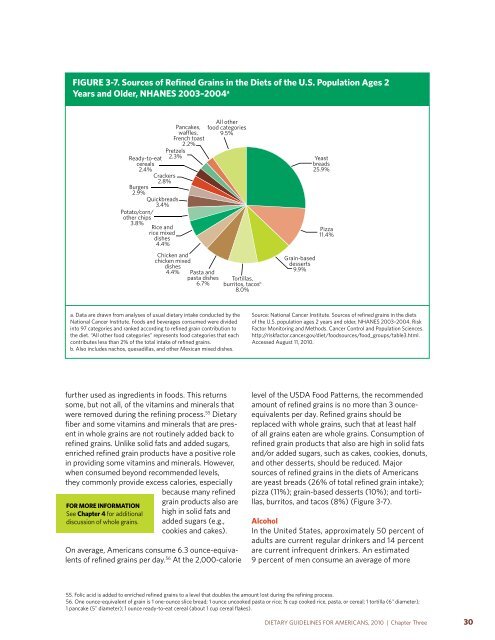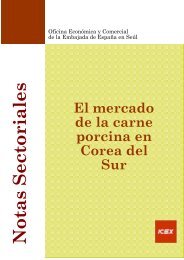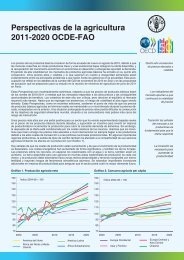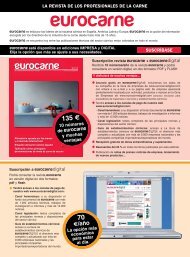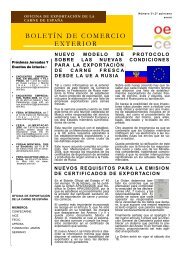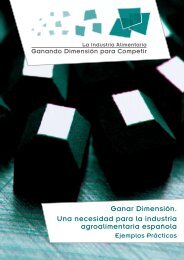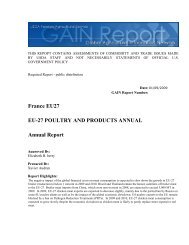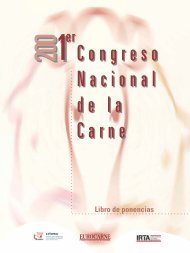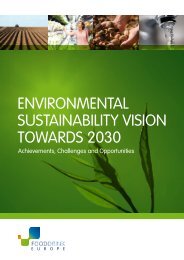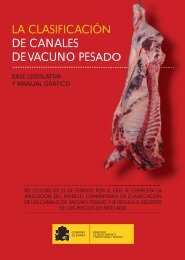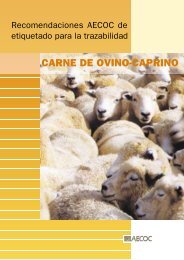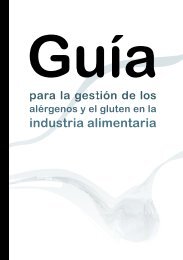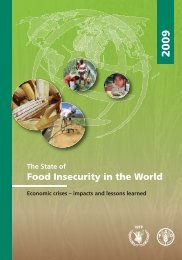Dietary Guidelines for Americans - SchoolNutritionAndFitness.com
Dietary Guidelines for Americans - SchoolNutritionAndFitness.com
Dietary Guidelines for Americans - SchoolNutritionAndFitness.com
- No tags were found...
You also want an ePaper? Increase the reach of your titles
YUMPU automatically turns print PDFs into web optimized ePapers that Google loves.
figure 3-7. sources of refined grains in the diets of the u.s. Population ages 2years and older, nhanes 2003–2004 aReadytoeatcereals2.4%BurgersCrackers2.8%2.9%Quickbreads3.4%Potato/corn/other chips3.8%Rice andrice mixeddishes4.4%All otherPancakes, food categorieswaffles, 9.5%French toastPretzels2.3%Chicken andchicken mixeddishes4.4%2.2%Pasta andpasta dishes6.7%Tortillas,burritos, tacos b8.0%Grainbaseddesserts9.9%Yeastbreads25.9%Pizza11.4%a. Data are drawn from analyses of usual dietary intake conducted by theNational Cancer Institute. Foods and beverages consumed were dividedinto 97 categories and ranked according to refined grain contribution tothe diet. “All other food categories” represents food categories that eachcontributes less than 2% of the total intake of refined grains.b. Also includes nachos, quesadillas, and other Mexican mixed dishes.Source: National Cancer Institute. Sources of refined grains in the dietsof the U.S. population ages 2 years and older, NHANES 2003–2004. RiskFactor Monitoring and Methods. Cancer Control and Population Sciences.http://riskfactor.cancer.gov/diet/foodsources/food_groups/table3.html.Accessed August 11, 2010.further used as ingredients in foods. This returnssome, but not all, of the vitamins and minerals thatwere removed during the refining process. 55 <strong>Dietary</strong>fiber and some vitamins and minerals that are presentin whole grains are not routinely added back torefined grains. Unlike solid fats and added sugars,enriched refined grain products have a positive rolein providing some vitamins and minerals. However,when consumed beyond re<strong>com</strong>mended levels,they <strong>com</strong>monly provide excess calories, especiallybecause many refined<strong>for</strong> More in<strong>for</strong>MationSee chapter 4 <strong>for</strong> additionaldiscussion of whole grains. grain products also arehigh in solid fats andadded sugars (e.g.,cookies and cakes).On average, <strong>Americans</strong> consume 6.3 ounce-equivalentsof refined grains per day. 56 At the 2,000-calorielevel of the USDA Food Patterns, the re<strong>com</strong>mendedamount of refined grains is no more than 3 ounceequivalentsper day. Refined grains should bereplaced with whole grains, such that at least halfof all grains eaten are whole grains. Consumption ofrefined grain products that also are high in solid fatsand/or added sugars, such as cakes, cookies, donuts,and other desserts, should be reduced. Majorsources of refined grains in the diets of <strong>Americans</strong>are yeast breads (26% of total refined grain intake);pizza (11%); grain-based desserts (10%); and tortillas,burritos, and tacos (8%) (Figure 3-7).alcoholIn the United States, approximately 50 percent ofadults are current regular drinkers and 14 percentare current infrequent drinkers. An estimated9 percent of men consume an average of more55. Folic acid is added to enriched refined grains to a level that doubles the amount lost during the refining process.56. One ounce-equivalent of grain is 1 one-ounce slice bread; 1 ounce uncooked pasta or rice; ½ cup cooked rice, pasta, or cereal; 1 tortilla (6" diameter);1 pancake (5" diameter); 1 ounce ready-to-eat cereal (about 1 cup cereal flakes).DIETARY GUIDELINES FOR AMERICANS, 2010 | Chapter Three 30


